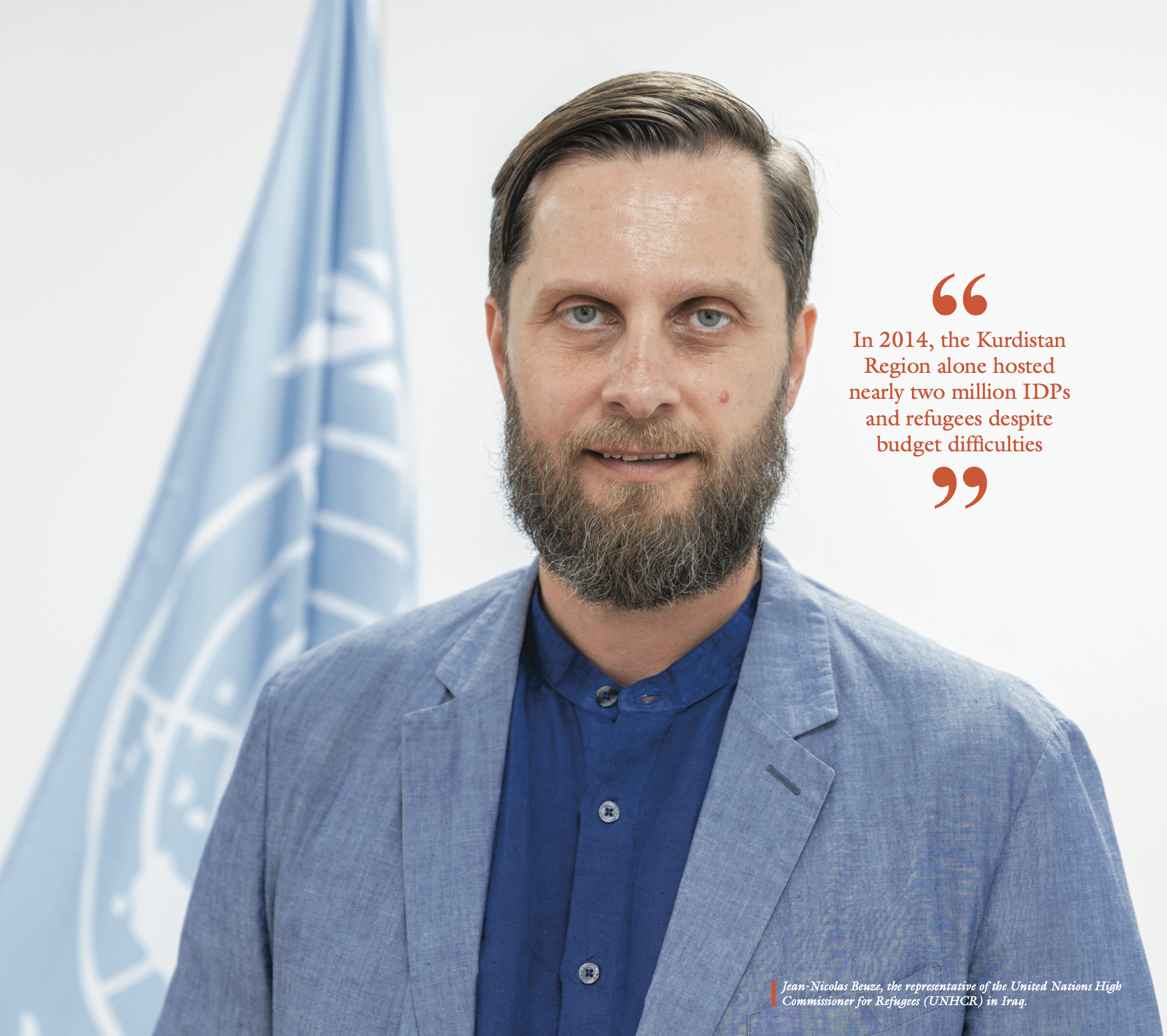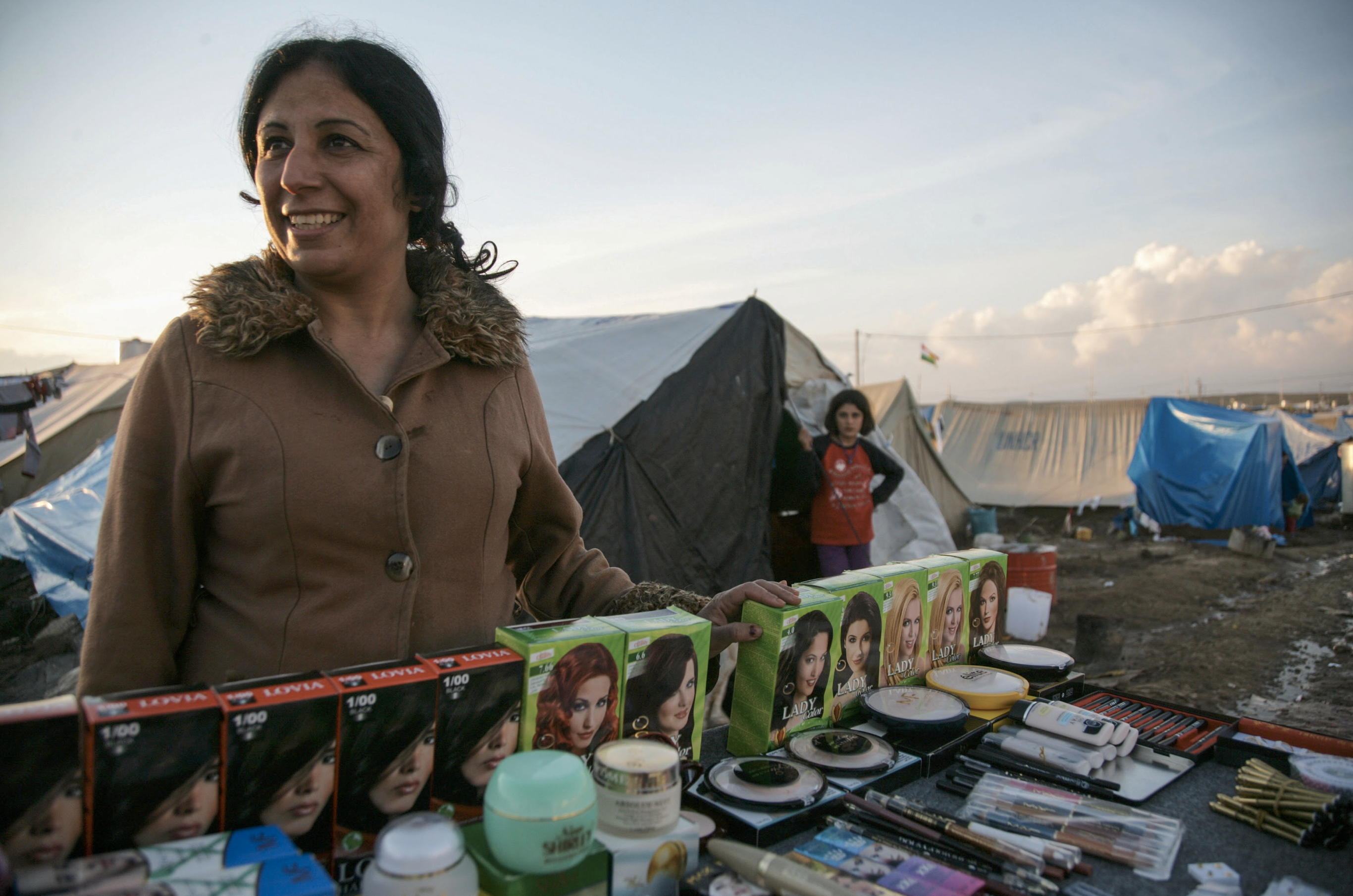The Iraqi government wants to close all camps throughout Iraq, including the Kurdistan Region of Iraq (KRI), by July 30 of this year. However, the Kurdistan Regional Government (KRG) has made clear that it will not forcefully return people who fled to the Kurdistan Region from ISIS in 2014 and the Syrian civil war in 2011.
The question now is where those vulnerable people will go and what will happen with the camps in the Kurdistan Region.
The KRG's choice might encounter opposition from the Iraqi central government, yet it's earning praise from the UNHCR, the UN Refugee Agency. “The UNHCR is grateful for this favorable protection space for refugees from both the KRG and the local communities who have been welcoming to them – especially as we witness less generosity in other parts of the world,” Jean-Nicolas Beuze, UNHCR Representative told Kurdistan Chronicle in an exclusive interview.
“We have supported – and will continue to support – Kurdish communities and authorities to protect and assist the Syrian refugees that they generously host. By and large, most refugees can stay in the KRI and have access to public services such as health or education as well as opportunities to live lives that are on par with those of the local population,” Beuze added.
The U.S. Consul General in Erbil Mark Stroh, after a visit to the Sheikhan refugee camp in late January, also praised the KRI for being a safe haven for internally displaced persons (IDPs) and refugees.
Meanwhile, KRG Minister of Interior Reber Ahmed, after meeting with Beuze to discuss IDPs and refugees on February 28, said in a post on social media platform X that there is a “ need for rallying efforts among stakeholders to find a durable solution to their plight, ultimately ensuring their safe and dignified return to their places of origin.”

Grateful for KRG policies
In 2014, the Kurdistan Region alone hosted nearly two million IDPs and refugees despite budget difficulties, while the Kurdish peshmerga forces, with the support of the United States-led coalition, prevented ISIS from advancing further into the Kurdistan Region. According to the latest data, the Kurdistan Region now hosts over 900,000 IDPs and refugees, including those living in camps and those outside them.
Beuze said that many IDPs who were displaced by the violence triggered by ISIS have returned home, but many are still living in informal settlements and urban settings. “Their current displacement status is not linked anymore to the presence of ISIS in their areas of origin but relate to factors that are unique to each displaced individual.”
“The UNHCR took the lead on behalf of the humanitarian community to focus on finding solutions for IDPs residing in camps while the International Organization for Migration and UN Development Program, as co-chairs of the Durable Solutions Task Force, are supporting the authorities in finding solutions for the 950,000 other IDPs,” he said.
Additionally, Beuze noted that most refugees can stay without fear of being forcibly returned to a country where they risk persecution, serious human rights violations, or armed violence.
“The UNHCR is particularly grateful for the policies adopted by the KRG in this respect, as they are aligned with international law,” he underlined. “In addition, refugees are largely included in public services such as education and health and have the same opportunities to find jobs as Kurdish Iraqis.”
He said that the UNHCR continues to remind relevant authorities that nobody must be forced to return to their place of origin.

Challenge for Yezidis
The Iraqi decision to close the camps is particularly challenging for the over 100,000 Yezidi IDPs, who fled the ISIS genocide in Sinjar in August 2014 and are still residing in camps in the KRI. Sinjar remains dominated by various militias and characterized by instability.
“This militarization, which has resulted in intermittent violence and invited Turkish air attacks, has created deep insecurities for Sinjar’s residents and prevented IDPs from returning,” a recent report on Sinjar by the London School of Economics and Politics Middle East Centre noted.
In October 2020, Baghdad and Erbil signed the Sinjar Agreement to reconstruct Sinjar District and remove the militias operating there, but so far it has not been implemented due to differences between the two capitals. According to the decision of the Iraqi government, IDPs and refugees should have three options: return home, be integrated locally, or be relocated to a third part of the country.
“The choice must be given to the IDPs themselves, and they must be able to exercise this choice freely, without pressure, and be fully informed of the conditions and assistance available for all three solutions,” Beuze underlined.
“At the same time, they must be supported so that once they have made a choice, their solutions are not only dignified but also sustainable in the long term. Otherwise, one risks fostering a cycle of displacement that has nothing to do with the original cause of displacement.”
The Iraqi Ministry of Displacement and Migration has started to allocate 4 million Iraqi dinars for the IDPs in camps to opt for one of the three solutions. The UN refugee official said this will help some to return home while others will opt to integrate locally or relocate somewhere else.
“We acknowledge the increase of this grant, which was previously 1.5 million Iraqi dinars, and the UN advocates that this assistance should also be made available to the majority of IDPs who are not residing in camps,” Beuze said.
“We will similarly work with Iraqi federal and Kurdish authorities to find solutions for IDPs in camps in line with international human rights law and best practices about the three choices that must be given to them and about ways to support the implementation of their decision.”
Beuze added that the “UNHCR has always advocated against putting forcibly displaced populations, refugees or IDPs, in camps, as they are never a sustainable, dignified manner of life, or a cost-effective way to host people.”
So far, some camps have already closed in the Kurdistan Region, including in the Sulaymaniyah Governorate and Garmiyan District, with many Sunni Arab IDPs able to return to the Diyala and Salah-Al-Din Governorates.
Moreover, last summer, the KRG Ministry of Interior permitted IDPs in camps in eastern Mosul to return to their nearby villages in the Al-Hamdaniya sub-district of the Nineveh Governorate.
“Those who have now returned need continued attention, so that these villages are reconnected to public services provided by federal institutions,” Beuze said.
The UN refugee official underlined that solutions may require time and must be tailored to the specific circumstances of each family and individuals, but that the UNHCR will support Baghdad and Erbil to assist the IDPs to return home safely and in dignity.

Nobody should be forced to return
Another question remains: what will happen to the over 251,475 Syrian Kurdish refugees from northeastern Syria and 8,357 Kurdish refugees from northwestern Iran, who are mostly residing in the Kurdistan Region?
Syria continues to grapple with ongoing violence, while Iranian Kurdish refugees – many of whom escaped the Iran-Iraq War in the 1980s and have links to political parties outlawed in Iran – risk facing political persecution or even death sentences upon their return to Iran.
“The UNHCR identifies the most vulnerable refugees and asylum seekers for resettlement but ultimately, globally, far less than 1% of refugees are ever resettled in a third country,” Beuze said when asked about the options for Iranian Kurdish refugees to be resettled abroad.
“The UNHCR also works with a number of countries who admit refugees as migrants through work permits, under family reunification schemes, or for study purposes, including through scholarships,” he added.
The situation is also challenging for Syrian Kurds, who could face military conscription, instability, violence, and economic challenges at home.
“The human rights situation in northeastern Syria has not improved,” Beuze noted. “As a result, some Kurdish Syrians need to leave Syria to save their lives. The UNHCR thus commends the authorities, especially the KRG, in allowing them to stay.”
In 2023, the UNHCR registered just over 11,000 new arrivals, of whom 87% were Syrians, and recorded around 2,300 spontaneous returns to Syria.
“The Syrians who recently arrived confirmed to us that they fled due to prevailing insecurity, dire living conditions, and limited access to or availability of basic services in northeast Syria,” Beuze said.
“Ultimately, nobody should be forced to return to one’s own country if they do not feel that they will be safe from harm, be it individual persecutions or generalized armed violence and conflict,” he concluded.